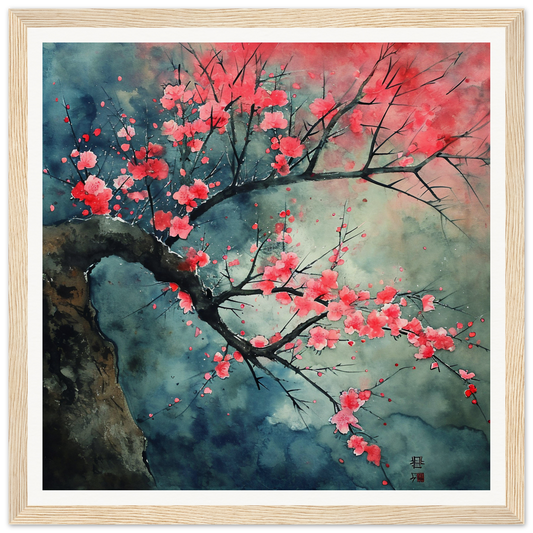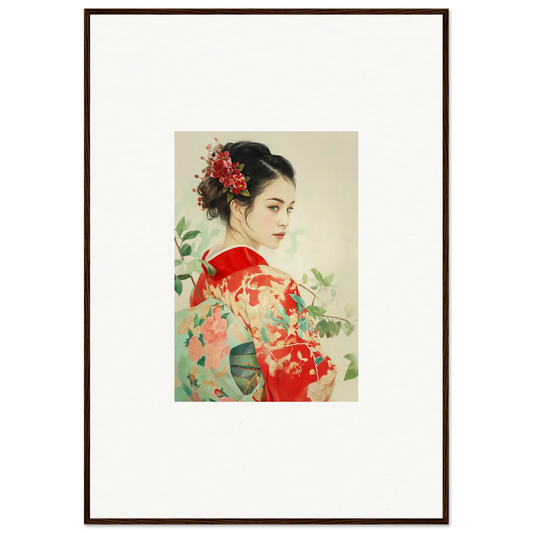
Shirin Neshat: Exploring Femininity, Identity, and Islamic Art
Share
Shirin Neshat: Exploring Femininity, Identity, and Islamic Art
Overview
Early Life and Background
Shirin Neshat was born in Iran in 1957 and grew up during a time of political and social unrest. She was heavily influenced by the Islamic Revolution in 1979, which had a profound impact on her understanding of identity and femininity. Neshat's early experiences in Iran shaped her artistic vision and she later moved to the United States to pursue her studies. This cross-cultural background plays a significant role in her exploration of themes such as cultural identity, diaspora, and the intersectionality of gender and religion.
Artistic Career
Shirin Neshat's artistic career has been marked by her unique and thought-provoking approach to exploring themes of femininity, identity, and Islamic art. Through her powerful and visually stunning photography and video installations, she challenges societal norms and stereotypes surrounding women in both Western and Islamic cultures. Neshat's work often focuses on the representation of women, highlighting their strength, resilience, and complexity. She seeks to challenge stereotypes by presenting women as multi-dimensional individuals with their own desires, dreams, and agency. Neshat's art also empowers women by giving them a voice and a platform to express their experiences and perspectives. Her work is a testament to the power of art in promoting dialogue, understanding, and social change.
Themes and Motifs
In her work, Shirin Neshat explores a variety of themes and motifs that are central to her artistic expression. She delves into the complexity of gender, power, politics, and religion, often challenging societal norms and expectations. Neshat's photographs and videos often feature veiled women, whose presence serves as a symbol of both oppression and resistance. Through her art, she aims to empower women and give them a voice, highlighting their strength and agency. Neshat's exploration of these themes and motifs creates a thought-provoking dialogue about the intersection of femininity, identity, and sociopolitical issues.
Exploring Femininity
Representation of Women
In her art, Shirin Neshat explores the complexity and diversity of women's experiences. She challenges traditional stereotypes and presents women as multi-dimensional and empowered individuals. Neshat's work often depicts women in various roles, from strong and defiant to vulnerable and introspective. Through her photography and films, she highlights the strength and resilience of women, while also acknowledging the societal pressures and expectations they face. Neshat's portrayal of women is a powerful testament to their agency and the richness of their stories.
Challenging Stereotypes
In her work, Shirin Neshat aims to challenge and subvert stereotypes surrounding women in Islamic societies. Through her powerful and thought-provoking photographs and films, she disrupts the notion of Muslim women as passive and oppressed. Neshat portrays strong, independent women who defy societal expectations and assert their agency. By presenting a nuanced and complex representation of femininity, she challenges the oversimplified narratives often associated with Muslim women.
Empowerment and Agency
In her work, Shirin Neshat explores the theme of empowerment and agency among women. She challenges traditional stereotypes and presents women as strong and independent individuals. Through her art, she encourages women to embrace their power and take control of their own narratives. Neshat's use of symbolism and iconography helps to convey the message of empowerment and agency, as she incorporates elements that represent strength and resilience. By reinterpreting and subverting traditional norms, Neshat empowers women to break free from societal constraints and assert their own identities.
Identity and Belonging
Cultural Identity
Shirin Neshat's exploration of cultural identity is a central theme in her artwork. As an Iranian-born artist who has lived in exile for many years, Neshat grapples with questions of belonging and displacement. Her photographs and videos often depict individuals who are caught between multiple cultural and social contexts, reflecting the complex experiences of those who navigate between different worlds. Through her art, Neshat invites viewers to reflect on their own sense of identity and the ways in which cultural influences shape our understanding of ourselves and others.
Diaspora and Exile
In her exploration of diaspora and exile, Shirin Neshat delves into the experiences of individuals who have been uprooted from their homeland and forced to navigate new cultural and social landscapes. Through her art, she captures the complexities of identity and the longing for a sense of belonging. Neshat's photographs and films often depict individuals who are caught between two worlds, reflecting the challenges and struggles faced by those who are displaced. By highlighting the experiences of the diaspora and the impact of exile, Neshat brings attention to the universal themes of displacement and the search for home.
Intersectionality
Intersectionality is a key concept in Shirin Neshat's work, as she explores the overlapping and interconnected systems of oppression and discrimination that individuals may experience. Through her art, Neshat highlights the complex intersections of gender, race, religion, and culture, emphasizing the need for a more inclusive and nuanced understanding of identity. By addressing the multiple dimensions of identity, Neshat challenges the notion of a singular experience and encourages viewers to recognize the diverse experiences and perspectives of individuals within marginalized communities. Her work serves as a powerful reminder of the importance of recognizing and valuing the intersectional nature of identity.
Islamic Art and Tradition
Incorporating Calligraphy
In her artworks, Shirin Neshat seamlessly integrates calligraphy as a powerful visual element. Drawing inspiration from traditional Islamic art, Neshat skillfully combines Arabic script with evocative imagery to create thought-provoking compositions. The use of calligraphy not only adds a layer of aesthetic beauty to her pieces but also serves as a symbolic representation of language, communication, and cultural heritage. By incorporating calligraphy, Neshat bridges the gap between contemporary art and traditional Islamic artistic practices, highlighting the significance of language and its role in shaping individual and collective identities.
Symbolism and Iconography
In her artwork, Shirin Neshat incorporates symbolism and iconography to convey deeper meanings and explore the complexities of Islamic culture. She often uses traditional symbols such as veils, calligraphy, and henna patterns to represent various aspects of femininity, spirituality, and cultural identity. Through these symbols, Neshat challenges traditional interpretations and stereotypes, offering her own unique perspective on Islamic art. By reinterpreting and subverting these symbols, she aims to create a dialogue about the intersection of tradition and modernity, and the role of women in Islamic societies.
Reinterpretation and Subversion
In her exploration of Islamic art and tradition, Shirin Neshat incorporates calligraphy as a central element in her works. Calligraphy, with its rich history and significance in Islamic culture, becomes a tool for Neshat to challenge and subvert traditional notions. She skillfully weaves calligraphic elements into her photographs and films, creating a dialogue between the written word and visual imagery. Through this reinterpretation, Neshat brings a fresh perspective to Islamic art, inviting viewers to question and reevaluate their preconceived notions.































